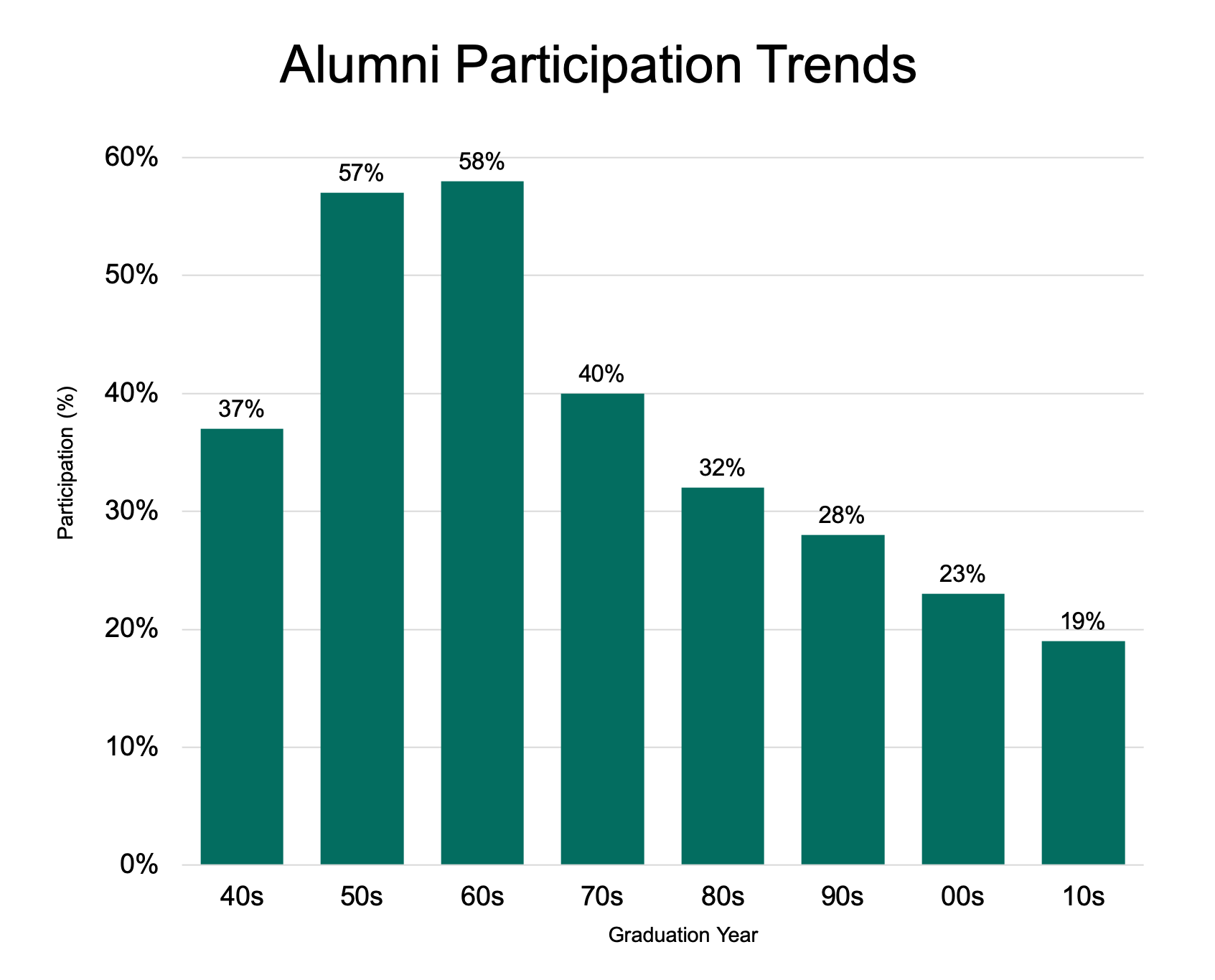How to Maximize Alumni Giving With Minimal Effort

Market segmentation may be the key to your advancement success in alumni giving.
Alumni directors have spent decades trying to unlock what exactly it is that makes their donors tick—that is, why some people are willing to give back to their alma mater in exorbitant amounts, while others terminate their relationship with their university upon receiving their diploma. The current, strongly downward trend in alumni participation has reinvigorated this effort, making people even more curious about how they can get more people to give— and give more—than ever before. As a result, copious amounts of research have been done to try and determine why people give the amounts that they do and who are most inclined to give.
Which Alumni Choose to Give?
A study done by Jason Coolman, the Director of Alumni Affairs at the University of Waterloo, broke alumni down into three categories — Leaders, Potential Leaders, and Low Engagement Alumni. His study analyzed how each of these groups gave to the university financially and found an “80/1 Rule” in alumni giving trends. This means that about 80% of alumni giving came from an astonishingly small 1% of the alumni population. The data from this study is shown in detail below:

Increase Your Return on Effort (ROE)
The megatrends in the data above suggest that while most alumni fall into the Low Engagement Alumni category, the majority of donations come from the Leaders category. The amount of effort and resources it would take to convert a material number of Low Engagement Alumni into Leaders would be extremely high. They would likely deplete an advancement department’s budget in mere weeks. However, the effort to convert Potential Leaders into Leaders would be far less, as Potential Leaders only comprise 3% of the total alumni population. If advancement directors created a targeted advancement approach intended to move this small group of Potential Leaders into the Leader category, the results would be far more effective than if we tried to target the Low Engagement Alumni. The amount of financial giving would increase by 5.3 times, and the process would require 1/32nd of the effort required if they targeted the Low Engagement Alumni.
So, who are these “Potential Leaders,” and how can they become the panacea for your alumni giving woes?
Advancement’s Target Demographic
It turns out that the Potential Leaders and the Leaders have very similar demographics. These groups of people are alumni who live relatively close to their university’s campus, are 50 or older, have an executive job position, and have graduated from a professional program. Both groups have the same financial means, so the difference is that Leaders feel an intense connection to their university — and are willing to give. They are fully aware of the value that their university brought to their lives, both professionally and personally, and want to ensure that future generations will receive a similarly meaningful and fulfilling experience.

Memories Have Value
Leaders don’t see their college experience as something that concluded in a graduation ceremony after four years. They view it as an ongoing emotional attachment, sustained by lasting friendships and happy memories of their college years. Suppose alumni advancement directors want to reap the financial benefits of transferring the Potential Leaders to Leaders. In that case, they must find a way to make this segment of the alumni population reconnect with the university emotionally. To unlock this massive growth potential in alumni giving, they must catalyze a reconnection to college friends and college memories.
Our software uses multiple scientific techniques to help you increase your alumni giving amount. Sign up for a free demo at CueBack today to find out more.
Stay ahead of the curve with CueBack
The world of advancement is changing. Don’t get left behind. Stay ahead of the curve with insights from forward thinkers in the industry who are paving the way for tomorrow’s advancement professional leaders.
